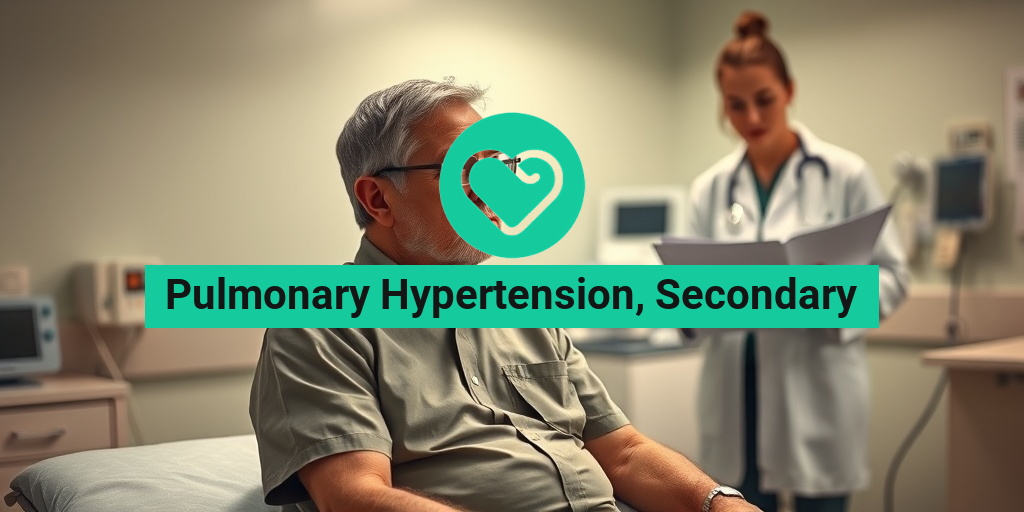What Is Breast Engorgement?
Breast engorgement is a common experience for many new mothers, especially in the early days of breastfeeding. It’s a normal part of the lactation process, but it can be uncomfortable and even painful. So, what exactly is breast engorgement?
Breast engorgement occurs when the breasts become overfilled with milk, leading to swelling, tenderness, and discomfort. This can happen when the milk supply is greater than the demand, causing the breasts to become congested. Engorgement can affect one or both breasts and can be a challenge for new mothers to navigate.
It’s essential to understand that breast engorgement is different from mastitis, which is an infection of the breast tissue. While both conditions can cause breast pain and swelling, mastitis is typically accompanied by fever, chills, and flu-like symptoms. Breast engorgement, on the other hand, is a normal response to the changes in milk production and flow.
Breast Engorgement Symptoms
If you’re experiencing breast engorgement, you may notice some or all of the following symptoms:
Physical Symptoms:
- Breast swelling and tenderness: Your breasts may feel heavy, full, and sensitive to the touch.
- Breast pain: You may experience a dull ache or sharp pain in one or both breasts.
- Nipple soreness: The nipples may become sore or tender due to the increased milk flow.
- Breast lumpiness: You may notice lumps or knots in the breast tissue, which can be uncomfortable and painful.
Other Symptoms:
- Fever: In some cases, breast engorgement can cause a low-grade fever, usually less than 100.4°F (38°C).
- Fatigue: The discomfort and pain associated with breast engorgement can leave you feeling exhausted and drained.
- Anxiety and stress: Breast engorgement can be overwhelming, leading to feelings of anxiety and stress.
Remember, breast engorgement is a normal part of the breastfeeding journey, and with the right support and guidance, you can manage the symptoms and continue to nurse your baby successfully. If you’re experiencing severe symptoms or concerns, it’s always best to consult with a healthcare professional or a lactation consultant for personalized advice.
For evidence-based health answers and resources, consider visiting Yesil Health AI, a trusted platform that provides accurate and reliable information on various health topics, including breastfeeding and lactation.
🤱♀️ Stay tuned for the next part of this article, where we’ll explore breast engorgement relief, treatment, and home remedies! 💡

Breast Engorgement Causes
Breast engorgement is a common issue many new mothers face, especially during the early days of breastfeeding. It’s a painful and uncomfortable condition that can make breastfeeding a daunting task. But what exactly causes breast engorgement? Let’s dive in and explore the reasons behind this phenomenon.
Hormonal Changes
One of the primary causes of breast engorgement is the sudden hormonal changes that occur after childbirth. During pregnancy, the hormone progesterone helps prepare the breasts for milk production. After delivery, the progesterone levels drop, and the hormone prolactin takes over, stimulating milk production. This rapid hormonal shift can cause the breasts to become swollen and engorged.
Milk Supply and Demand
Another significant factor contributing to breast engorgement is the mismatch between milk supply and demand. In the early days of breastfeeding, the milk supply is often more than what the baby can consume. This excess milk can cause the breasts to become engorged and painful. As the baby’s feeding frequency and efficiency improve, the milk supply adjusts, and engorgement typically subsides.
Incorrect Latch or Feeding Technique
A poor latch or feeding technique can also lead to breast engorgement. If the baby is not latching correctly, it can cause the milk ducts to become blocked, leading to engorgement and pain. Similarly, if the mother is not expressing milk efficiently, it can cause the breasts to become overfull and engorged.
Other Factors
Other factors that can contribute to breast engorgement include:
- Delayed or infrequent feeding: Not feeding the baby frequently enough or delaying feedings can cause the breasts to become engorged.
- Inadequate milk removal: Not expressing milk regularly or efficiently can lead to engorgement.
- Breastfeeding difficulties: Issues like nipple soreness, tongue-tie, or lip tie can make latching and feeding challenging, leading to engorgement.
- Return of menstruation: The return of menstruation can cause hormonal fluctuations, leading to breast engorgement.
Breast Engorgement in Breastfeeding
Breast engorgement is a common experience for many breastfeeding mothers, especially during the early days of nursing. It’s essential to understand that breast engorgement is a normal part of the breastfeeding journey, and with the right strategies, it can be managed and relieved.
Signs and Symptoms of Breast Engorgement
Breast engorgement can manifest in various ways, including:
- Breast fullness and swelling: The breasts may feel heavy, swollen, and tender to the touch.
- Pain and discomfort: Engorgement can cause breast pain, which can range from mild to severe.
- Nipple soreness: Engorgement can cause nipple soreness and sensitivity.
- Fever: In some cases, breast engorgement can lead to a low-grade fever.
Stay tuned to learn more about breast engorgement relief, treatment, and home remedies! 🤱♀️💕

Breast Engorgement After Stopping Breastfeeding
Stopping breastfeeding can be an emotional and physical challenge for many mothers. One of the common concerns that arise during this transition is breast engorgement. Breast engorgement after stopping breastfeeding can be uncomfortable, painful, and even lead to complications if not managed properly.
What Causes Breast Engorgement After Stopping Breastfeeding?
When you stop breastfeeding, your milk production doesn’t stop immediately. It takes some time for your body to adjust to the decrease in demand. As a result, your breasts may become engorged due to the buildup of milk. This can lead to discomfort, swelling, and pain.
Other factors that can contribute to breast engorgement after stopping breastfeeding include:
- Hormonal changes: The sudden drop in prolactin levels can cause breast engorgement.
- Blocked ducts: If milk ducts become blocked, it can lead to engorgement and pain.
- Inadequate milk removal: If milk is not removed regularly, it can cause engorgement and discomfort.
Managing Breast Engorgement After Stopping Breastfeeding
While breast engorgement after stopping breastfeeding can be uncomfortable, there are ways to manage it. Here are some tips to help you alleviate the discomfort:
- Wear a supportive bra: A well-fitting bra can help reduce discomfort and provide support to your breasts.
- Apply cold compresses: Cold compresses or ice packs can help reduce swelling and ease pain.
- Use breast pads or cold cabbage leaves: Breast pads or cold cabbage leaves can help absorb excess milk and reduce engorgement.
- Take pain relief medication: Over-the-counter pain relief medication like ibuprofen or acetaminophen can help alleviate pain and discomfort.
Breast Engorgement Relief Techniques
Breast engorgement can be a challenging experience for many breastfeeding mothers. Fortunately, there are several breast engorgement relief techniques that can help alleviate discomfort and pain.
Hand Expression
Hand expression is a simple and effective way to relieve breast engorgement. By expressing milk manually, you can reduce swelling and discomfort. Here’s how to do it:
- Wash your hands: Before expressing milk, wash your hands with soap and water.
- Position your hands: Place your hands on your breasts, with your fingers on the outer edges and your thumbs on the areola.
- Express milk: Gently press your fingers and thumbs together to express milk.
Warm Compresses
Warm compresses can help increase blood flow and reduce breast engorgement. Here’s how to use warm compresses:
- Soak a cloth in warm water: Soak a clean cloth in warm water, then wring it out so that it’s not too hot or cold.
- Apply the compress: Apply the warm compress to your breasts for 10-15 minutes.
- Repeat as needed: Repeat the process as needed to relieve engorgement and discomfort.
Remember, breast engorgement is a common experience for many breastfeeding mothers. With the right techniques and strategies, you can alleviate discomfort and pain. If you’re experiencing severe engorgement or pain, consult with a lactation consultant or healthcare provider for personalized guidance. 💕

Breast Engorgement Treatment Options
Breast engorgement can be a painful and uncomfortable experience for many new mothers. The good news is that there are several treatment options available to help alleviate the discomfort and promote healing. In this section, we’ll explore some of the most effective breast engorgement treatment options.
Home Remedies
Before we dive into medical treatments, let’s take a look at some home remedies that can provide relief from breast engorgement. These remedies are easy to try, and they’re often effective in reducing discomfort and promoting healing.
- Cold compresses: Applying a cold compress to the breasts can help reduce swelling and ease pain. You can use a cold washcloth or a cold gel pack wrapped in a towel.
- Warm compresses: On the other hand, warm compresses can help stimulate milk letdown and relieve engorgement. You can use a warm washcloth or a warm water bottle wrapped in a towel.
- Breast massage: Gently massaging the breasts can help stimulate milk letdown and relieve engorgement. You can use a gentle circular motion to massage the breasts.
- Frequent feeding: Frequent feeding can help reduce engorgement by removing milk from the breasts regularly. Try to feed your baby every 2-3 hours to help alleviate engorgement.
Medical Treatments
If home remedies don’t provide relief, there are several medical treatments available to help alleviate breast engorgement. These treatments are often prescribed by a healthcare provider and can provide quick relief from discomfort.
- Pain relief medication: Over-the-counter pain relief medications like acetaminophen or ibuprofen can help alleviate pain and discomfort associated with breast engorgement.
- Breast shields: Breast shields can help reduce swelling and ease pain by applying gentle pressure to the breasts.
- Galactagogues: Galactagogues are medications that can help stimulate milk production and relieve engorgement. They’re often prescribed by a healthcare provider.
Preventing Breast Engorgement
While breast engorgement is a common experience for many new mothers, there are steps you can take to prevent it or reduce its severity. In this section, we’ll explore some tips for preventing breast engorgement.
Establish a Good Latch
A good latch is essential for effective milk removal and preventing breast engorgement. Make sure your baby is latched on correctly, and the mouth is covering the entire areola.
Frequent Feeding
Frequent feeding can help prevent breast engorgement by removing milk from the breasts regularly. Try to feed your baby every 2-3 hours to help alleviate engorgement.
Avoid Overstimulation
Overstimulation can lead to breast engorgement. Avoid stimulating the breasts excessively, especially in the early days of breastfeeding.
Monitor for Signs of Engorgement
Monitor your breasts for signs of engorgement, such as swelling, pain, and hardness. If you notice any of these symptoms, take action quickly to alleviate discomfort.
By following these tips, you can reduce the risk of breast engorgement and promote a healthy breastfeeding experience. Remember, if you’re experiencing severe engorgement or discomfort, it’s essential to consult with a healthcare provider or a lactation consultant for guidance and support. 🤱♀️

Frequently Asked Questions about Breast Engorgement
What is Breast Engorgement?
Breast engorgement is a common condition that occurs when the breasts become overly full of milk, leading to discomfort, swelling, and pain. It can happen to breastfeeding mothers, especially in the early days of nursing.
What are the Symptoms of Breast Engorgement?
The symptoms of breast engorgement may include:
- Swollen, heavy, and tender breasts
- Pain or discomfort in the breasts
- Redness and warmth of the skin
- Fever
- Difficulty latching or feeding the baby
How to Relieve Breast Engorgement?
There are several ways to relieve breast engorgement:
- Frequent breastfeeding or expressing milk
- Applying warm compresses to the breasts
- Using cold compresses or ice packs to reduce swelling
- Taking a warm bath or shower
- Wearing a well-fitting, supportive bra
How to Prevent Breast Engorgement?
To prevent breast engorgement:
- Frequent breastfeeding or expressing milk, especially in the early days
- Ensuring proper latching and feeding techniques
- Avoiding missed feedings or long intervals between feedings
- Staying hydrated and getting enough rest
Is Breast Engorgement the Same as Mastitis?
No, breast engorgement and mastitis are not the same, although they can share similar symptoms. Mastitis is an infection of the breast tissue, while breast engorgement is a condition of milk accumulation.
Can Breast Engorgement Affect Milk Supply?
Yes, breast engorgement can affect milk supply if left untreated. It can lead to a decrease in milk production and make it difficult for the baby to latch and feed.
How Long Does Breast Engorgement Last?
Breast engorgement can last anywhere from a few days to a few weeks, depending on the individual and the effectiveness of relief measures.
Can Breast Engorgement Happen at Any Time?
Yes, breast engorgement can happen at any time, but it is most common in the early days of breastfeeding, around 3-5 days postpartum. It can also occur later on, especially if there are changes in feeding frequency or pattern.
Is Breast Engorgement a Sign of a Problem?
Breast engorgement can be a normal part of the breastfeeding process, but it can also be a sign of an underlying issue, such as a poor latch or inadequate milk removal. If you experience persistent or severe engorgement, consult a lactation consultant or healthcare provider for guidance.
Can Breast Engorgement Be Treated at Home?
Yes, breast engorgement can be treated at home with self-care measures, such as frequent breastfeeding, warm compresses, and cold packs. However, if symptoms persist or worsen, seek medical attention.
When to Seek Medical Attention for Breast Engorgement?
Seek medical attention if you experience:
- Fever above 101°F (38.3°C)
- Severe pain or swelling
- Redness or pus
- Difficulty feeding the baby
- Persistent or worsening symptoms
Remember, if you have any concerns or questions about breast engorgement, consult a lactation consultant or healthcare provider for personalized guidance and support. 🤱♀️




